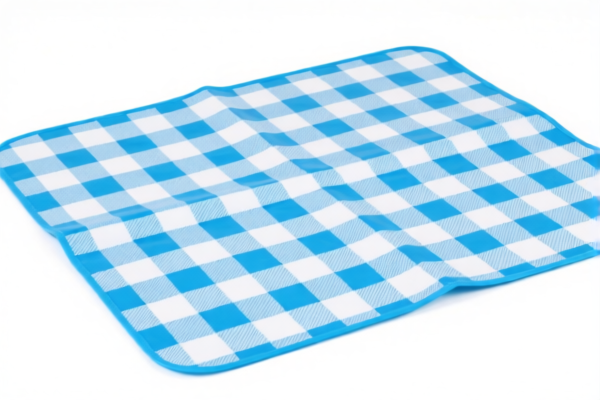| HS Code | Official Doc | Tariff Rate | Origin | Destination | Effective Date |
|---|---|---|---|---|---|
| 9404909670 | Doc | 37.3% | CN | US | 2025-05-12 |
| 3918901000 | Doc | 60.3% | CN | US | 2025-05-12 |
| 3918905000 | Doc | 59.2% | CN | US | 2025-05-12 |
| 3926903300 | Doc | 36.5% | CN | US | 2025-05-12 |
| 3926909989 | Doc | 42.8% | CN | US | 2025-05-12 |
| 4818900080 | Doc | 37.5% | CN | US | 2025-05-12 |
| 4818300000 | Doc | 55.0% | CN | US | 2025-05-12 |
| 4823901000 | Doc | 55.0% | CN | US | 2025-05-12 |
| 4823902000 | Doc | 55.0% | CN | US | 2025-05-12 |




Picnic Mat
A picnic mat is a ground cover used for leisure activities, primarily providing a clean, dry, and comfortable surface for sitting or lying on outdoors.
Material
Picnic mats are constructed from a variety of materials, each offering different benefits:
- Fabric (Polyester, Nylon, Cotton): Common choices due to affordability and ease of cleaning. Often treated for water resistance.
- PVC/Vinyl: Durable, waterproof, and easy to wipe clean, but less breathable and can be heavier.
- PE (Polyethylene): Lightweight and water-resistant, often used in cheaper mats.
- Fleece: Provides warmth and softness, often used as a top layer for added comfort.
- Straw/Woven Materials: Traditional options, offering a natural aesthetic but requiring more care and less water resistance.
- Rubberized Backing: Frequently added to fabric mats to provide a waterproof and non-slip base.
Purpose
The primary purpose of a picnic mat is to:
- Provide a clean surface: Protects users from dirt, grass, and debris.
- Offer comfort: Creates a more pleasant seating or lounging experience.
- Define a space: Marks a designated area for a picnic or outdoor activity.
- Water resistance: Prevents moisture from seeping through from damp ground.
Function
A picnic mat functions by:
- Insulation: Provides a slight barrier against cold or damp ground.
- Cushioning: Offers a degree of comfort, though thickness varies significantly.
- Portability: Designed to be easily folded or rolled for transport.
- Ease of Cleaning: Materials are typically chosen for their ability to be wiped down or machine washed.
Usage Scenarios
- Picnics: The most common application.
- Camping: Used as a base layer inside tents or for outdoor seating.
- Beaches: Provides a clean surface for relaxing on sandy shores.
- Parks & Outdoor Events: Used for general outdoor lounging, festivals, concerts, and sporting events.
- Backyard Activities: Creates a comfortable space for children to play or for outdoor gatherings.
Common Types
- Foldable Mats: The most common type, typically made of polyester or nylon and folding into a compact size. Often feature a carry handle.
- Roll-Up Mats: Similar to foldable mats but rolled instead of folded.
- Waterproof Blankets: Larger, thicker mats often with multiple layers for increased comfort and water resistance.
- Straw Mats: Traditional woven mats, often used in Asian cultures.
- Padded/Quilted Mats: Offer increased cushioning and comfort, often used for more extended lounging.
- Beach Mats: Designed with sand-resistant materials and often featuring stakes for securing in windy conditions.
- Oversized Picnic Blankets: Large blankets suitable for large groups.
Based on the material, use, and application scenarios, a picnic mat typically functions as a floor covering used for outdoor leisure activities.
Here are the relevant HS codes found within the provided reference material:
- 3918901000: This HS code covers floor coverings of plastics, whether or not self-adhesive, in rolls or in the form of tiles. It specifically applies to those made of other plastics. The two-digit sections break down as follows:
- 39: Plastics and articles thereof.
- 18: Plastics floor coverings.
- 90: Other plastics floor coverings.
- 3926903300: This HS code covers other articles of plastics and articles of other materials of headings 3901 to 3914, specifically handbags. While primarily for handbags, the broader category includes articles of plastics. The two-digit sections break down as follows:
- 39: Plastics and articles thereof.
- 26: Other articles of plastics and articles of other materials.
- 90: Other articles.
- 3926909989: This HS code covers other articles of plastics and articles of other materials of headings 3901 to 3914, specifically other articles not elsewhere specified. The two-digit sections break down as follows:
- 39: Plastics and articles thereof.
- 26: Other articles of plastics and articles of other materials.
- 90: Other articles.
Regarding HS code 3918901000, please note that the material is limited to "other plastics". If the picnic mat is made of a specific type of plastic not categorized as "other", this HS code may not be appropriate.
Customer Reviews
No reviews yet.